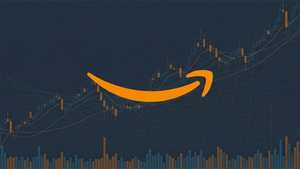
Taiwan's Exchange Traded Fund (ETF) market has undergone an extraordinary transformation, with total assets under management (AUM) not only surpassing NT$3.5 trillion but reaching an astounding NT$6.5 trillion (approximately US$216.96 billion) as of June 2025. This explosive growth, driven primarily by an enthusiastic retail investor base and innovative product offerings, has firmly established Taiwan as the third-largest ETF market in Asia, behind only mainland China and Japan. The rapid expansion carries profound implications for the Taiwanese financial market, investor behavior, and the broader Asian financial landscape, signaling a shift towards more accessible, diversified, and yield-focused investment strategies.
The surge in ETF popularity reflects a "thirst for yield" among Taiwanese investors, who have long faced persistently low interest rates on traditional bank savings. This has channeled massive capital inflows into high-dividend ETFs, which have become a mainstream investment tool. Furthermore, the market has seen a significant boost from thematic funds, particularly those aligned with Taiwan's dominant semiconductor and artificial intelligence (AI) industries. This phenomenon is reshaping the financial services ecosystem, intensifying competition among asset managers, and prompting regulators to adapt swiftly to ensure market stability and investor protection.
Unpacking the Phenomenon: A Detailed Look at Taiwan's ETF Boom
The growth trajectory of Taiwan's ETF market has been nothing short of spectacular. As of June 2025, the aggregate assets of ETFs listed in Taiwan exceeded NT$6.5 trillion, marking a substantial increase from NT$4 trillion in January 2024 and NT$2.3 trillion at the end of 2022. This represents a 65% expansion in 2024 alone, making the market 38 times larger than a decade prior. The number of listed ETFs has also swelled, reaching over 270 by June 2025, up from just 37 in 2015. This expansion has been paralleled by a "democratization of investing," with the number of ETF beneficiaries reaching 15.44 million by June 2025 – a 62% jump from 2023 figures, indicating that one in four Taiwanese citizens has invested in an ETF.
The timeline of this surge reveals a proactive regulatory environment alongside evolving investor preferences. While the first Taiwan ETF, the Polaris Taiwan 50 Tracker Fund, was launched by Yuanta Securities Investment Trust Co. (Yuanta SITC) in 2003, initial adoption was slow. Momentum truly began to build from 2014 with the approval of leveraged and inverse ETFs, followed by the introduction of an ETF dual trading mechanism in 2016 and dollar-cost averaging (DCA) plans in 2017. A pivotal moment arrived in 2024 and 2025 when the Financial Supervisory Commission (FSC) greenlit active ETFs and passive multi-asset ETFs. This led to the listing of Taiwan's first active ETF, the Nomura Taiwan Smart Select Active ETF (TWSE: 00980A), in May 2025, followed by the CTBC ARK Innovation Active ETF (TWSE: 00983A) in June 2025 and the Nomura Taiwan 50 Enhanced Equity Active ETF (TWSE: 00985A) in July 2025, marking a significant shift towards more sophisticated investment options.
Key players driving this growth include the FSC and the Taiwan Stock Exchange (TWSE), which have actively lobbied for ETF-friendly reforms and promoted market liquidity. Major local ETF providers such as Yuanta Securities Investment Trust Co. (Yuanta SITC), Cathay Securities Investment Trust Co. (Cathay SITC), and Capital Investment Trust Corp. have dominated the high-dividend and equity ETF segments, with Yuanta holding a significant market share. International asset managers, including Nomura Asset Management Taiwan Ltd. and Allianz Global Investors, are also increasingly entering the active ETF space, viewing Taiwan as a dynamic testing ground. The initial market reaction to this growth has evolved from early hesitation to a "frenzy" around high-dividend ETFs in early 2024, leading to concerns about market stability and calls for regulatory vigilance. However, the introduction of active ETFs in 2025 was met with strong enthusiasm, with their combined AUM quickly surpassing NT$24 billion.
The rapid expansion is underpinned by several factors: the overwhelming retail investor demand for yield in a low-interest-rate environment; the immense appeal of high-dividend and thematic (especially AI and semiconductor-focused) ETFs; the inherent accessibility, cost-effectiveness, and diversification benefits of ETFs; continuous regulatory innovation and a well-developed market ecosystem; and strong investor confidence in the TAIEX (Taiwan Stock Exchange Capitalization Weighted Stock Index) and its pivotal chip industry, particularly the influence of companies like Taiwan Semiconductor Manufacturing Co. (TSMC) (TWSE: 2330 / NYSE: TSM).
Winners and Losers: Impact on Public Companies
The burgeoning Taiwan Stock ETF market has created a clear dichotomy of winners and losers among public companies, largely determined by their inclusion in popular high-dividend or thematic funds, their sector alignment, and market capitalization.
Companies poised to benefit significantly are those deeply embedded in Taiwan's semiconductor and AI ecosystems, or those with a strong history of high dividend payouts. Taiwan Semiconductor Manufacturing Company (TSMC) (TWSE: 2330 / NYSE: TSM), as the world's largest contract chip manufacturer and a cornerstone of the global technology industry, is a primary beneficiary. Its substantial weighting in numerous Taiwan-focused ETFs ensures consistent demand for its shares. Other AI-related firms like Hon Hai Precision Industry Co. (Foxconn) (TWSE: 2317), a leader in AI servers, Delta Electronics (TWSE: 2308), known for power management solutions, and Quanta Computer (TWSE: 2382), vital for server technology, are also well-positioned to see increased investment interest through thematic tech ETFs. High-dividend payers such as United Microelectronics Corporation (UMC) (TWSE: 2303 / NYSE: UMC), explicitly owned by all five popular high-yield ETFs due to its attractive dividend yield, benefit from substantial capital inflows, which can boost stock prices and liquidity. Large-cap, established companies forming the core holdings of broad market ETFs, like the Yuanta/P-shares Taiwan Top 50 ETF (TWSE: 0050), also enjoy a steady baseline demand from passive investment flows.
Conversely, companies that do not fit these criteria are likely to face disadvantages. Small and medium-cap stocks are increasingly losing investor interest, making it harder for them to raise capital as funds disproportionately flow into larger, more liquid stocks favored by ETFs. These smaller firms often lack the trading volume and market capitalization necessary for inclusion in major ETFs, leading to reduced demand for their shares, lower liquidity, and decreased visibility among passive investors. Similarly, companies with low or inconsistent dividend payouts miss out on the substantial capital directed towards dividend-focused strategies, potentially leading to comparative underperformance. Lastly, companies in less favored or non-thematic sectors—those not directly aligned with the booming AI and semiconductor trends—may also experience less attention from ETF flows, resulting in lower valuations and slower stock price growth compared to their peers in popular sectors. The overall impact of this trend includes increased asset price co-movement within ETFs, potential market liquidity skewness, and a broader shift from active to passive investment strategies.
Wider Significance: Reshaping Asia's Financial Landscape
The explosive growth of Taiwan Stock ETFs carries a wider significance that extends beyond its domestic market, impacting global and Asian ETF trends, financial sector dynamics, and regulatory paradigms. Taiwan's ETF market, with its five-year compound growth rate nearing 40% as of early 2024, has become the fastest-growing globally, solidifying its position as a major player in Asia. This rapid expansion aligns with global trends of increasing investor demand for cost-efficient, transparent, and diversified investment solutions, yet Taiwan distinguishes itself with an overwhelming interest in high-dividend equity ETFs and a unique reliance on retail investor participation.
The ripple effects across the financial sector are profound. Asset management firms, particularly local giants like Yuanta SITC and Cathay SITC, have seen their ETF assets surge, enabling them to outgrow traditional active investment managers. This has intensified competition and solidified ETFs as a dominant force in Taiwan's public funds industry. Brokerage firms are also adapting, shifting their business models from transaction-fee reliance to generating consulting fees by assisting investors in building diversified ETF portfolios. Concerns about market liquidity skewness and concentration risk have emerged, especially with massive inflows into specific high-dividend ETFs occasionally causing brokerage system overloads and impacting the trading volumes of underlying stocks. This highlights a substantial change in local investor behavior, with retail investors overwhelmingly dominating Taiwan's ETF market at 99.7%, a stark contrast to other regional markets where institutional investors hold the majority.
Taiwanese regulators, particularly the FSC and TWSE, have been instrumental in fostering this growth through progressive reforms, including the approval of leveraged, inverse, futures, smart beta, and most recently, active ETFs. These measures are part of Taiwan's broader strategy to develop into a regional asset management hub. However, regulators have also implemented measures to address potential risks, such as market stability and concentration, by diversifying the client base for fixed-income ETFs and limiting new ETF sales to individual institutional investors.
Historically, Taiwan's ETF growth draws parallels with other markets. Its contribution to market liquidity and diversification echoes efforts in Japan and Hong Kong to stabilize markets during economic downturns. The retail-driven growth, fueled by low interest rates, mirrors similar phenomena in the U.S. market. Moreover, the increasing demand for "regional stability ETFs" in the context of U.S.-China-Taiwan tensions suggests a "home bias" strategy among investors seeking to hedge against geopolitical uncertainty. The recent shift towards active ETFs in Taiwan also reflects a global trend, as seen in the U.S. with the SEC's ETF Rule 6c-11, where regulatory changes unlock product innovation and drive market expansion beyond traditional passive instruments.
The Road Ahead: What Comes Next
The future outlook for Taiwan Stock ETFs and the broader financial market is characterized by a blend of robust growth opportunities and significant geopolitical and trade-related challenges. In the short term (2025), Taiwan's ETF market is projected to continue its strong growth, building on its position as Asia's third-largest. The recent introduction of active and multi-asset ETFs, approved by the FSC in late 2024 and early 2025, is a key development, expected to diversify product offerings and attract more capital, with the active ETF market potentially reaching NT$200 billion (US$6.28 billion) by 2026. Taiwan's economy and stock market will remain heavily influenced by its pivotal role in the global AI and semiconductor supply chains, led by TSMC (TWSE: 2330 / NYSE: TSM), with global semiconductor equipment sales projected to climb by 7.4% in 2025. However, short-term headwinds include US-imposed tariffs, trade protectionism, and a strong Taiwan Dollar (TWD) potentially impacting export competitiveness.
Long-term possibilities (beyond 2025) appear resilient, underpinned by Taiwan's technological leadership. The structural demand for AI and digitalization trends will continue to propel the stock market, with the TWSE Index projected to reach TWD 26,480 by the end of 2027. Taiwan aims to develop into a regional asset management hub, attracting foreign investment and aligning its market with global standards through continuous product diversification, including smart beta ETFs and feeder funds. Despite ongoing US-China tensions, Taiwan's critical role in global semiconductor supply chains is expected to mitigate some uncertainties.
Strategic pivots are essential for asset managers and regulators. Asset managers must embrace active and multi-asset strategies, focusing on thematic ETFs aligned with Taiwan's strengths in AI and semiconductors. Leveraging retail investor trends through accessible products and educational campaigns, alongside international partnerships, will be crucial. Regulators, particularly the FSC, must continue their innovative approach by expanding permissible ETF structures while strengthening supervision and investor protection to manage market risks and ensure balanced development.
Emerging market opportunities lie in Taiwan's undeniable dominance in the AI and semiconductor industries, supply chain restructuring due to trade conflicts, growing domestic wealth, and the integration of ESG principles. However, significant challenges include escalating geopolitical risks between the US and China, potential trade protectionism, currency fluctuations, and the inherent market concentration in the semiconductor sector. Various scenarios range from an optimistic tech-driven boom, where Taiwan solidifies its hub status and the TWSE Index surpasses projections, to a pessimistic outcome involving escalating geopolitical conflict, leading to significant market outflows and economic contraction. The base case suggests resilient growth with managed headwinds, where the market navigates volatility driven by tech fundamentals and regulatory adaptations.
Comprehensive Wrap-Up: Navigating a Dynamic Market
The remarkable growth of Taiwan Stock ETFs, now exceeding NT$6.5 trillion in assets, signifies a pivotal moment for Taiwan's financial markets and its position within Asia. Key takeaways highlight an explosive AUM expansion, a unique dominance by retail investors driven by a "thirst for yield," proactive regulatory innovation leading to product diversification, and a strong foundation provided by Taiwan's tech-driven economy, particularly its indispensable role in the global semiconductor supply chain.
Moving forward, the market is poised for continued growth and significant transformation, entering what experts term an "ETF 2.0" era. Taiwan's aspiration to become an "Asian asset management center" is underpinned by sustained growth and the increasing internationalization of its financial products. AI and technology will remain core drivers, with companies like TSMC (TWSE: 2330 / NYSE: TSM) anchoring market strength. The rise of active and multi-asset ETFs is a crucial development, offering dynamic portfolio management and diversified asset allocation solutions, with early launches already demonstrating strong performance. The TWSE Index, having hit an all-time high of 26,394.03 in September 2025, is projected to reach 26,480 points by the end of 2027.
The lasting impact of this trend includes the democratization of investing in Taiwan, transforming capital markets, enhancing market sophistication, and elevating Taiwan's global recognition as a dynamic financial player. The massive inflows into specific ETF categories, especially high-dividend funds, will continue to influence the valuation and trading dynamics of underlying stocks.
For investors in the coming months, a balanced approach is advised. Opportunities abound in ETFs offering exposure to the AI and semiconductor sectors, given Taiwan's critical role. The newly approved active and multi-asset ETFs present potential for outperformance and diversified asset allocation. Furthermore, attractive valuations post-correction and the continued appeal of high-dividend income offer compelling entry points. Employing a Dollar Cost Averaging (DCA) strategy remains a prudent approach to mitigate market volatility. However, investors must remain vigilant regarding significant risks: ongoing U.S.-China trade tensions and potential cross-strait geopolitical instability pose the most substantial threat. Valuation concerns and speculative behavior, particularly in rapidly growing high-dividend funds, necessitate thorough due diligence. The inherent concentration risk within Taiwan's market, heavily weighted towards the semiconductor industry and TSMC (TWSE: 2330 / NYSE: TSM), means market performance is closely tied to a few large tech companies. Lastly, liquidity in niche ETFs and foreign exchange fluctuations, particularly a strong New Taiwan Dollar, could impact export competitiveness.
In conclusion, Taiwan's ETF market is a vibrant and rapidly evolving landscape. Investors should closely monitor global macroeconomic trends, especially in AI demand and semiconductor cycles, alongside geopolitical developments in the region. Staying informed about new ETF product launches and regulatory changes will be crucial for navigating this dynamic market and capitalizing on its opportunities while mitigating its inherent risks.
This content is intended for informational purposes only and is not financial advice.







